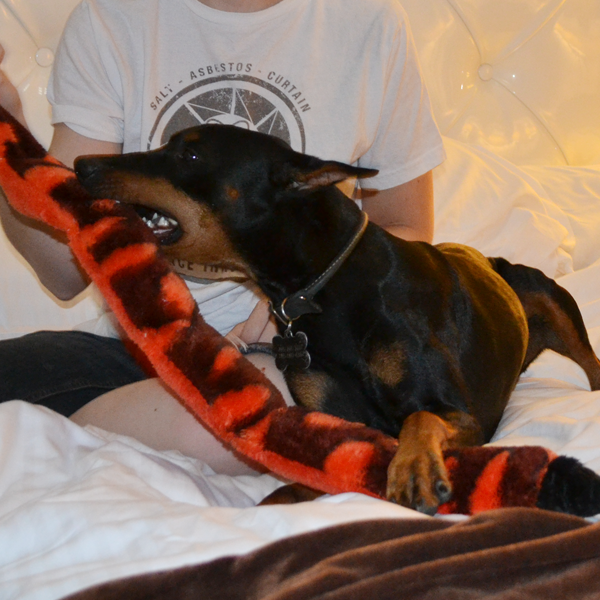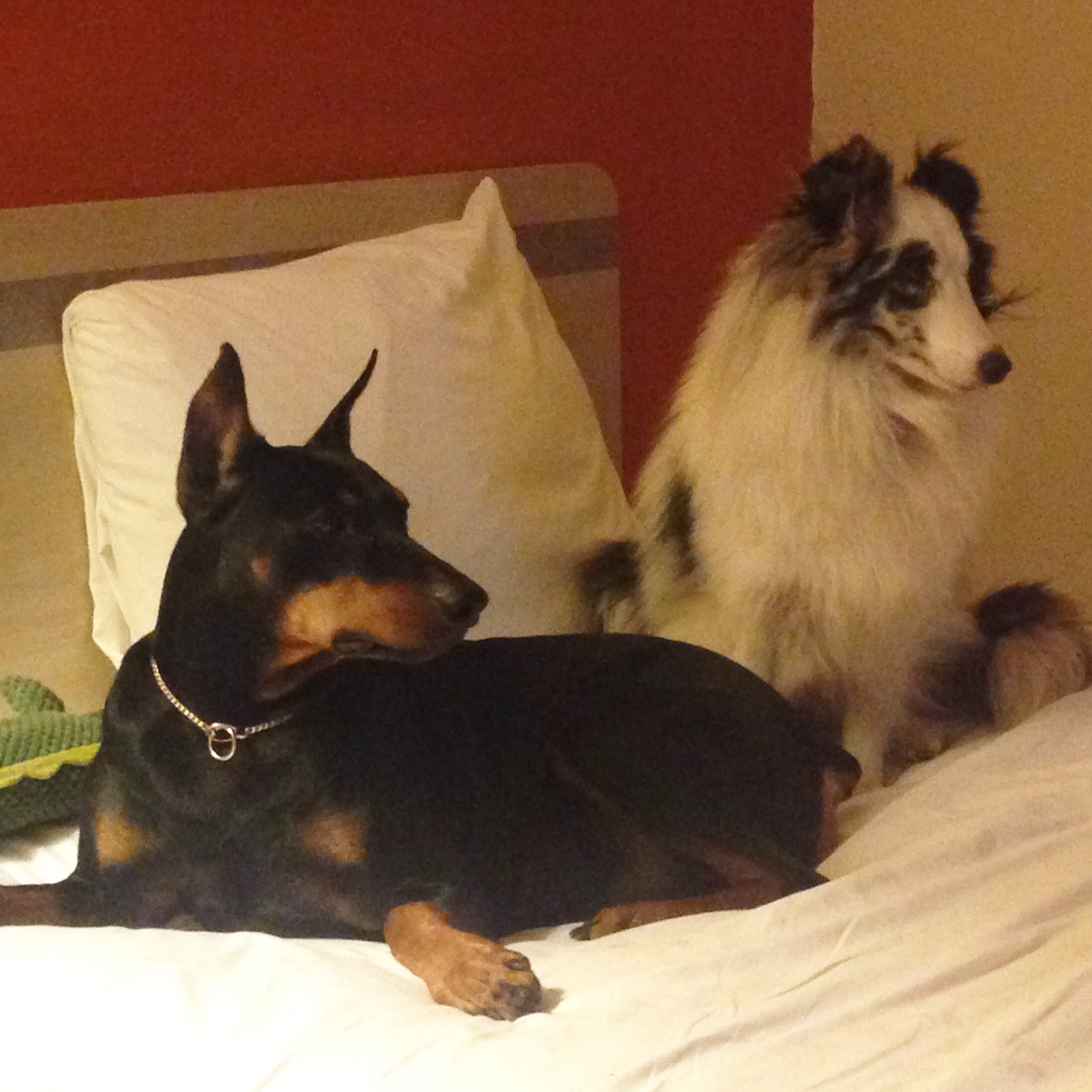Character
The German Pinscher is loyal, protective, loving, energetic and a lot of fun to live with! They are however, not the breed for everyone. They have a high training requirement and require an owner that is dedicated to being consistent and firm (but fair) in training. They are intelligent and will use it to their advantage! They can pose a challenge even for an experienced dog owner. However, with consistency and a structured environment they can be a joy to live with.
German Pinschers have a strong guarding instinct and are excellent watchdogs. They are not prone to being overly "barky". They do not, however, make good kennel or outside dogs. German pinschers love to be with their family! They are very people-oriented and make excellent companion dogs. They will frequently follow you from room to room in the house. Care must be taken to prevent separation anxiety when they are young and socialization is a must.
They require a moderate amount of exercise. It is beneficial to have a fenced in yard to play in, but German Pinschers can do well in apartments as long as they are given a good walk each day. It is important to provide them with an outlet for energy or they may become destructive or develop behavioral issues.
German Pinschers are highly intelligent and are quick to learn with the proper training. GPs have excelled in obedience, agility, tracking, and other sports. Food and toy drive can vary from individual to individual. They have a strong hunting instinct. Our pinschers have caught squirrels, rabbits, snakes, and even birds. Their instinct to chase prey is strong, and therefore they are not recommended to walk off leash. It is best to introduce them when they are young to cats or other small pets in the house.
Children and German Pinschers can get along as long as the children are taught to be respectful of the dog. It is better to start with a young puppy. Older children are a better match for GPs. German Pinschers will not tolerate abuse or harsh treatment. They are generally considered not a good fit for very young children.
This is what we consider a general description of the German Pinscher. It is important to talk with your breeder about the temperament of their dogs, puppies, and bloodline as there can be variations in all of these.
Health & Grooming
This is generally a healthy breed, however a few health problems have been reported. The most frequently seen problem in the breed is cataracts. It is recommended that breeding stock be evaluated yearly for cataracts. Hip dysplasia is very rare in the German Pinscher. There is no DNA test for hip dysplasia, however several studies have found the heritability of hip dysplasia to be from .15-.40, meaning 15 to 40% of the variation of hip results can be accounted for by genetics. Breeding stock should have hips evaluated and certified free of hip dysplasia. There is evidence food consumption plays a role in HD, and it has been suggested that exercise, growth rate, and other environmental factors play a significant role. It is important to minimize these environmental factors when you are raising a puppy.
Several cases of post vaccine reactions have been recorded. The delay in reaction means symptoms may not occur until up to nine and twelve days post-vaccine. It is important to monitor your puppy during this time for possible symptoms. You can read more about vaccine reactions here. A DNA test exists for Von Willebrand's disease, and your breeder should be able to tell you if their dogs are affected, are a carrier of the gene, or are clear (do not carry the gene). Epilepsy, cardiac problems, PRAA, megaesophagus, and thyroid issues have also been diagnosed in some German Pinschers.
A DNA test exists for the SOD1 mutation (the "Degenerative Myleopathy" DNA test). The SOD1 mutation has been found in more than 120 breeds and in mixed breed dogs, but DM has only been positively identified in 34 breeds. That's because having the SOD1 mutation is not the same as having DM. In fact, in several breeds the frequency of the SOD1 mutation is over 90%, and yet no members of those breeds have ever been positively diagnosed with DM (DM can only be definitively diagnosed via post-mortem histology of the spinal cord). DM has a complex mode of inheritance that requires more than just the SOD1 mutation, and it is theorized that as of yet unidentified mutations at other alleles must be present. Having two copies of the SOD1 mutation is not sufficient to cause DM in most breeds. The evidence of association between the genetic mutation and actual spinal cord evaluations has only been proven in a small number of breeds, and the German Pinscher is not one of them.
" The sod1 variant frequency is exponentially higher than the frequency of clinically affected dogs, and the homozygous state has low penetrance and is poorly predictive of clinical disease. The only situation where sod1 test results should be considered in making treatment and breeding decisions is when there are close relatives confirmed with clinical DM (and therefore a high probability of carrying other unidentified but necessary mutations for clinical disease)." (Bell, 2021).
Grooming requirements of the German Pinscher are minimal. They should be bathed as needed and nails trimmed weekly. We introduce our dogs to the dremel early so that they are comfortable with having their nails done.

GPs love to play!
Outlets for energy are important!GPs and Playing
Playing is a natural behavior for dogs and great for their physical and emotional well-being. You can channel your dog's energy into constructive activities like fetch, or play tug-of-war, flirt pole, or even dog sports. It is important to establish rules during playing and enforce them consistently. Never encourage play mouthing or nipping.

GPs and other pets
Requires compatible temperaments, safe introductions and supervision.GPs and multi-pet households
Compatible temperaments are a must. Dogs of the opposite sex tend to pair better. Introductions must be carried out safely. Meal times need to be supervised and you must watch for conflicts over resources. Supervision is very important, especially in the beginning. There are a lot of things to consider when adding another pet to your family.